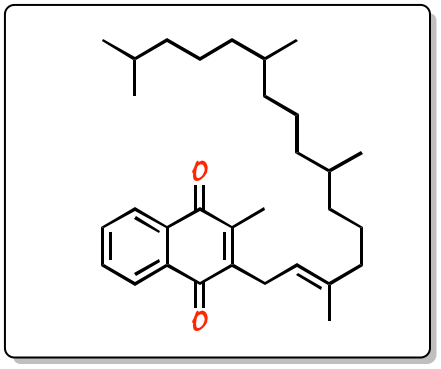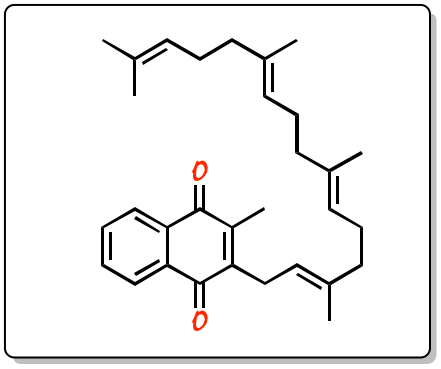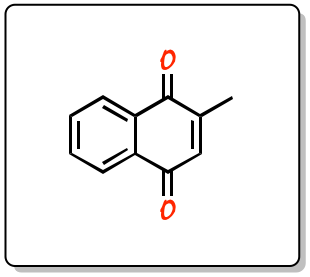What is vitamin K?
Vitamin K is a fat-soluble vitamin that is stable to air and moisture but decomposes in sunlight. Two vitamin K vitamers are found in nature: vitamin K1, or phylloquinone, and vitamin K2, or menaquinone, generated in tissues, and another called K3, or menadione, which is produced by certain bacteria.
The systematic name of the IUPAC for vitamin K1 is 2-methyl-3-[(E,7R,11R)-3,7,11,15-tetramethylhexadec-2-enyl]naphthalene-1,4-dione and for vitamin K2 it is 2-methyl-3-(3,7,11,15-tetramethylhexadeca-2,6,10,14-tetraenyl)naphthalene-1,4-dione, and for vitamin K3 is 2-methylnaphthalene-1,4-dione.
Chemical structure
Naturally, it occurs in two main forms, vitamin K1, or phylloquinone, and vitamin K2, or menaquinone (MK-4). Both have the general formulae C31H46O2 and C31H40O2, respectively. They have in common the quinone structure called menadione (or vitamin K3), a 2-methyl-1,4-naphthoquinone. In vitamin K1, the menadione is substituted at the 3-position with a side chain of 20 carbon atoms called phytane (isoprenoid alkane and isoprene alkene). In vitamin K2 (menaquinone or MK-4) it has different isoprene units (including three additional double bonds).
 |
| 3D Structure |
In addition, there are 6 different derivatives of vitamin K2 that are distinguished by having a different number of isoprene units in the side chain. The most common form in the human diet is the one with the shortest side chain and is called MK-4. Long-chain menaquinones (rather than MK-4) include MK-7, MK-8 and MK-9 and predominate in fermented soy foods such as natto.
 |
| 3D Structure |
The vitamer called vitamin K3, or menadione, is the basic structure common to all vitamin K vitamers. It is an organic compound analog of 1,4-naphthoquinone substituted in position 2 with a methyl (2-methylnaphthalene-1,4-dione). It is occasionally used as a nutritional supplement in animal feed.
 |
| 3D Structure |
Functions
Vitamin K is necessary for blood clotting and bone metabolism.
Food sources
Spinach, green leafy vegetables, oats, wheat bran, potatoes, cabbage, cauliflower, corn and soybeans. More specifically, vitamin K1 (phylloquinone) is found in green leafy vegetables and vitamin K2 (menaquinone) is present in meat by-products and fermented foods such as cheese and natto (fermented soybean).